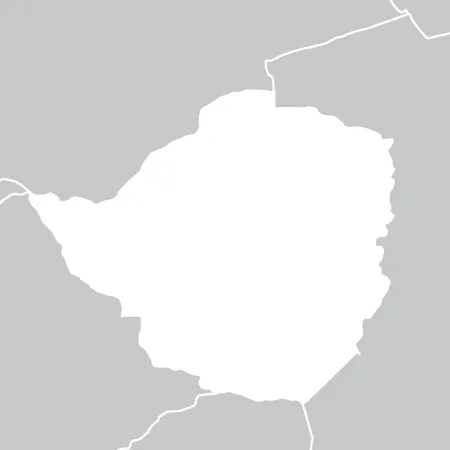
Unveiling the Past: Did Early Humans Walk Among Giant Sloths and Mastodons?
2024-12-24
Author: Rajesh
Unveiling the Past: Did Early Humans Walk Among Giant Sloths and Mastodons?
Recent findings challenge the long-held belief that humans were late settlers in the Americas. Instead, scientists are piecing together a narrative that suggests early humans coexisted with colossal creatures like giant sloths and mastodons for thousands of years. This revelation paints a new picture of prehistoric life and shifts our understanding of human evolution and survival.
Giant Ground Sloths and Mastodons
Giant ground sloths, which weighed over 8,000 pounds, traversed vast regions across North and South America. Contrary to our modern-day portrayal of sloths as sluggish tree-dwellers, these ancient relatives exhibited surprising aggression when threatened. Alongside them, the mighty mastodons grazed through lush landscapes, creating a vivid tableau of Ice Age fauna.
Challenging the Pleistocene Overkill Theory
For years, the prevailing theory known as "Pleistocene overkill" posited that humans arrived in the Americas approximately 13,000 years ago, rapidly hunting these imposing animals to extinction. However, new archaeological evidence suggests humans may have appeared much earlier in the continent’s history. Daniel Odess, an archaeologist working at White Sands National Park in New Mexico, is leading research that indicates human presence might date back more than 20,000 years.
Groundbreaking Evidence
The groundbreaking evidence includes ancient footprints discovered alongside those of mammoths and giant sloths buried in geological layers. Skeptics question the lack of additional artifacts from the same timeframe, but these tracks do imply a significant duration of human adaptation to a drastically changing ecosystem, rather than a brief period of aggressive hunting.
Fossil Discoveries in Brazil
Furthermore, fossil discoveries in Brazil are catalyzing fresh conversations about our timeline. At Santa Elina, researchers uncovered giant sloth fossils displaying signs of human modifications, suggesting they were intentionally altered for use as jewelry or other adornments—a clear indicator of human craftsmanship dating back potentially 25,000 years.
The Nature of Human Modifications
However, the debate continues, especially regarding the nature of the materials used. Did these artifacts originate from recently deceased animals or older fossilized remains? Laboratory analyses reveal that the modifications may have occurred shortly after the animals' deaths, lending credence to an earlier human presence.
Additional Archaeological Findings
Across the Americas, additional archaeological sites bolster the argument for this revised timeline. In Monte Verde, Chile, stone tools and preserved vegetation have been dated back 14,500 years, while archeological digs in Uruguay have yielded bones with cut marks that could be as old as 30,000 years.
Skepticism and Questions
These older dates provoke skepticism among certain experts and spark questions about dating reliability. However, consistent findings are prompting renewed consideration of the idea that human presence in the Americas predates previous estimates.
Complex Interplay of Factors
This growing body of evidence suggests early humans lived amongst and adapted to the majestic flora and fauna of their time, including the extinct megafauna. Paleontology experts highlight that remnants of ancient campsites likely featured hearths that left distinct burn marks on the bones of large animals.
Why Were Giant Mammals Not Immediately Driven to Extinction?
Why were giant mammals not immediately driven to extinction upon the arrival of humans? Emerging theories propose that climate changes significantly disrupted habitats and food sources, impacting these large creatures more than direct human hunting. As researchers piece together data from various sites, they illustrate how a complex interplay of environmental and anthropogenic factors contributed to the eventual extinctions.
Reconstructing Timelines
The chronological puzzle remains challenging. Researchers rely on an array of dating techniques—radiocarbon analysis, geological correlation, and DNA sequencing to reconstruct timelines and validate findings. While difficulties persist, the repeated emergence of coherent patterns reveals a consensus building around the notion that humans arrived in the Americas well before the traditionally accepted date.
Future Discoveries
Future discoveries promise to deepen our understanding of early human life in the Americas, providing insight into interactions with giant sloths, mastodons, and other extinct species. As excavations continue, each new fossil and artifact contributes a vital piece to the intricate story of human evolution and the history of our planet.
Stay Informed
Stay informed with the latest discoveries in anthropology and paleontology, as researchers unravel the mysteries of our ancient world.



 Brasil (PT)
Brasil (PT)
 Canada (EN)
Canada (EN)
 Chile (ES)
Chile (ES)
 España (ES)
España (ES)
 France (FR)
France (FR)
 Hong Kong (EN)
Hong Kong (EN)
 Italia (IT)
Italia (IT)
 日本 (JA)
日本 (JA)
 Magyarország (HU)
Magyarország (HU)
 Norge (NO)
Norge (NO)
 Polska (PL)
Polska (PL)
 Schweiz (DE)
Schweiz (DE)
 Singapore (EN)
Singapore (EN)
 Sverige (SV)
Sverige (SV)
 Suomi (FI)
Suomi (FI)
 Türkiye (TR)
Türkiye (TR)